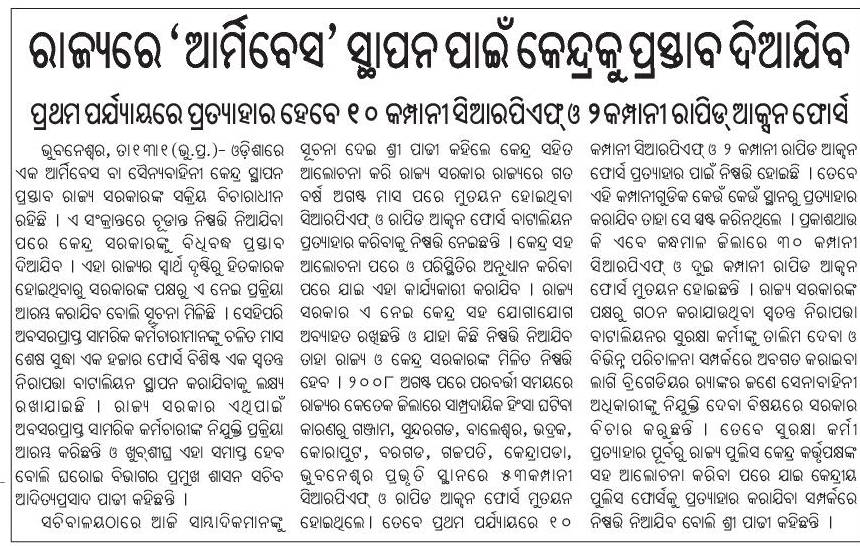"Dr. Manmohan Singh" <pmosb@pmo.nic.in>, "Chief Minister" <cmo@ori.nic.in>, "Orissa Governor" <govori@ori.nic.in>,
<abhijit.sen@yojana.nic.in>, <anwarul.hoda@yojana.nic.in>, <b.mungekar@yojana.nic.in>, <dch@yojana.nic.in>, <kirit.parikh@yojana.nic.in>, <mvraja@yojana.nic.in>, <plancom@nic.in>, <s.hameed@yojana.nic.in>, <vl.chopra@yojana.nic.in>, <yugandhar.bn@nic.in>, "subas@nic.in" <subas@nic.in>
cc to journalists: <abcxy123@hotmail.com>, <admin@dailypratap.com>, <akb@businessstandard.com>, <alokmehta7@hotmail.com>, <ankur@jaintv.com>, <arindam.sengupta@timesgroup.com>, <colpnk@hotmail.com>, <dr.jain@jaintv.com>, <editet@timesgroup.com>, <editor@deccanmail.com>, <editor@the-week.com>, <feedback@tehelka.com>, <ie.pksahoo@gmail.com>, <indinon@vsnl.in>, <karanthapar@itvindia.net>, <klnandan@yahoo.com>, <letters@deccanherald.co.in>, <letters@tribuneindia.com>, <lngoel@zeenetwork.com>, <mashriq@vsnl.net>, <mnutan@hotmail.com>, <mythilib@gmail.com>, <npnawani@indiatimes.com>, <nsuri@milap.com>, <pjoshi@hindustantimes.com>, <prabhu@intoday.com>, <punit.jain@timesgroup.com>, <punjabidigest@hotmail.com>, <pvohra@hindustantimes.com>, <rajc@intoday.com>, <ratnam@intoday.com>, <saeednaqvi@hotmail.com>, <sargamstudio@rediffmail.com>, <shishir.joshi@aajtak.com>, <takhatram@hotmail.com>, <tarunvijay@vsnl.com>, <thehindu@vsnl.com>, <toieditorial@timesgroup.com>, <ttedit@abpmail.com>, <vmehta@outlookindia.com>, <vsanghvi@hindustantimes.com>, "braja k mishra" <brajakmishra@gmail.com>, "manorama" <maya@mitraprakashan.com>, "Prasanta Kumar Sahoo" <pksahoo2002@gmail.com>, "Shishir Bhate" <shishirb@rediff.co.in>
cc to Orissa NDA mps: <ananta@sansad.nic.in>, <bmahtab@sansad.nic.in>, <deobk@sansad.nic.in>, <dharmendra@deogarhorissa.com>, <jualoram@sansad.nic.in>, <makswain@sansad.nic.in>, <mayfair@sansad.nic.in>, <pmajhi@sansad.nic.in>, <pyarimohan@yahoo.co.uk>, <pyarimohanap@sansad.nic.in>, <rknayak@sansad.nic.in>, <rn.pany@sansad.nic.in>, <surendra@sansad.nic.in>, "B J Panda" <office.bjpanda@gmail.com>, "Balbir Punj" <punjbk@gmail.com>, "jual oram" <jualoram@hotmail.com>, "Tathagata Satpathy" <tatzaudi@yahoo.com>
cc to Orissa opposition biggies: "janardan pati" <j_pati_orissa@yahoo.com>, "rohit pujari" <rohit_pujari2001@yahoo.com>, "Srikant Jena" <srikant_jena@hotmail.com>, "Chandrasekhar Sahu’s OSD" <skpattanayak@hotmail.com>
cc to BJP bigwigs: <advanilk@sansad.nic.in>, <ananta@sansad.nic.in>, <asahu@nic.in>, <ashourie@sansad.nic.in>, <bjpco@bjp.org>, <bjpco@del3.vsnl.net.in>, <bpapte@vsnl.com>, <chandan.mitra@sansad.nic.in>, <covdnhrc@nic.in>, <deobk@sansad.nic.in>, <gandhim@sansad.nic.in>, <george@sansad.nic.in>, <iisatwal@hotmail.com>, <jaswant@sansad.nic.in>, <jualoram@sansad.nic.in>, <kjana@sansad.nic.in>, <makswain@sansad.nic.in>, <minister@mit.gov.in>, <mnaqvi@sansad.nic.in>, <mprasad@nic.in>, <msgill@sansad.nic.in>, <murli@sansad.nic.in>, <mvnaidu@sansad.nic.in>, <najmah@sansad.nic.in>, <pati@nic.in>, <pilania.g@sansad.nic.in>, <pmajhi@sansad.nic.in>, <rajnath@sansad.nic.in>, <rn.pany@sansad.nic.in>, <spokesman_rss@yahoo.com>, <surendra@sansad.nic.in>, <swaraj@sansad.nic.in>, <vajpayee@sansad.nic.in>, <ysinha@sansad.nic.in>
cc to UPA bigwigs: <10janpath@vsnl.net>, <ambika_aicc@yahoo.com>, <arjuns@sansad.nic.in>, <chavanprithviraj@sansad.nic.in>, <cpim@vsnl.com>, <jairam@vsnl.com>, <kapilsibal@hotmail.com>, <km.sahni@nic.in>, <nath@sansad.nic.in>, <oscar@sansad.nic.in>, <praful@sansad.nic.in>, <sjaipal@sansad.nic.in>, <speakerloksabha@sansad.nic.in>, <svpatil@sansad.nic.in>, "Dr. Manmohan Singh" <pmosb@pmo.nic.in>, "Jairam Ramesh" <jairam@sansad.nic.in>, "Kamal Nath" <cim@nic.in>, "Ram Vilas Paswan" <psmin.cpc@sb.nic.in>
FAX: PMO at 23016857 , 23015603 (Delhi STD code is 11), CMO at 674 2590 833 (home) 674 2535 100 (office) and Planning Commission at 23096699
To:
Dr. Manmohan Singh
Prime Minister of India
Cc: Mr. Naveen Patniak, Chief Minister of Orissa
Cc: Shri Muralidhar Chandrakant Bhandare, Governor of Orissa
Subject: Solving the greater Kandhamala problem – going after the root cause in a war footing
Dear Dr. Singh:
While the civil society in Orissa, the nation and the world is disturbed by the communal violence in Kandhamala, I would urge you to take steps to eradicate the root cause of the violence in Kandhamala and the nearby tribal, hilly, forested, awfully connected, poor and backward districts of Orissa (and its neighboring states). In this regard, please note that the violence did not spread to the major towns and cities of Orissa (such as Bhubaneswar, Puri, Cuttack, Rourkela, Sambalpur, Berhampur, Balasore etc.) that are well connected (by Rail and roads), decently developed and have a civil society.
While the violence involving the murder of Swami Laxmanananda on August 23rd 2008 and the subsequent communal violence that has taken about 40 lives is most deplorable and is in the forefront of the media, please also recall the following events that also took place within the last year in these areas:
- February 15 2008: 400 to 500 armed Naxals raided the Nayagarh armory and killed 15 people including 13 policemen.
- June 29 2008: 30 elite anti-insurgency policemen were killed by Maoists near Malkangiri.
- July 16 2008: 21 Orissa policemen were killed in a land mine explosion and firing by the ultras in Malkangiri.
- Dec 27 2007: Eleven churches were ransacked and torched in several areas of Kandhamal district.
Please note that these events happened in places in Orissa (Nayagarh, Malkangiri and Kandhamal) that are badly connected, near or within forests, have a large tribal population, and are among the most backward districts of India. The following map shows these districts are surrounded by large tracts of dense and open forested areas, and partly explains why the naxalites and Maoists are able to make them their base and why it has been difficult to deploy adequate police there in a timely manner.
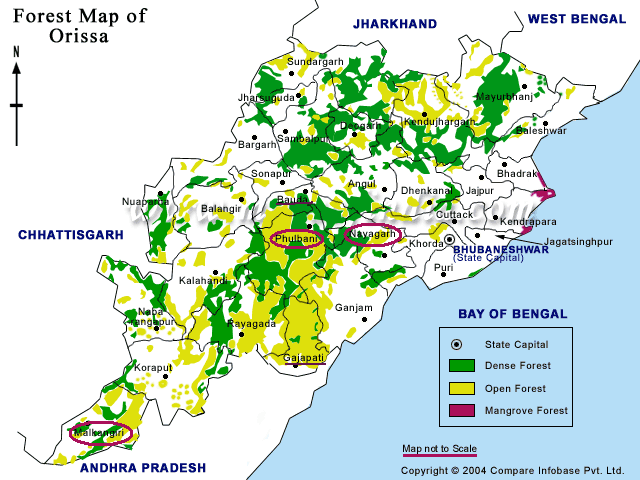
(NOTE: Phulbani is now called Kandhamala)
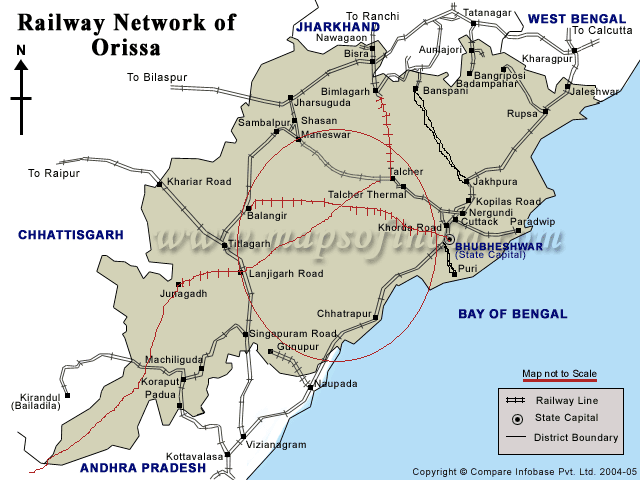
(Note: The lines in red are the ones that are needed to bring rail connectivity to the Kandhamala, Nayagarh and Malkangiri districts and criss-cross the big connectivity gap in the heart of Orissa. The crossed segments are already approved but progressing very slowly.)
Sir: As an economist and a world leader you must know that lack of connectivity, lack of development, lack of a civil society, entrenched forest and mountainous areas together with a different population base is a recipe for the sprouting of troubled areas. This is true all across the world; from J& K and North eastern areas of India to caucuses in Asia. While one cannot and should not get rid of the mountains or the people, the problem can be solved by making the areas well connected and bringing development. The Indian government is doing that in J & K and in the northeast; but has mostly forgotten about the similar areas in Orissa, Chhatisgrah, and Andhra Pradesh, which are the favorite bases of the Naxals and Maoists.
Sir: We would like you to pay the same attention to these areas in terms of connectivity, development, and creation of civil societies, as you do to the North east and J & K. In particular we would request that following be done in a war footing during the 11th plan.
(i) The Vijaywada-Ranchi highway that passes through many of these areas be completed.
(ii) Broadband connectivity be brought to these districts with adequate access locations.
(iii) Two Railway lines, parts of which have already been sanctioned by the Railways but are progressing slowly, are completed and made operational. Those lines are:
a. Khurda Rd – Balangir (passes through Nayagarh and Boudh) – This line was sanctioned in 1994-95 is progressing very slowly.
b. Bhadrachalam Rd (Andhra Pradesh) – Malkangiri – Jeypore – Nabarangpur – Junagarh – Lanjigarh Rd – passing through Kandhamala – Boudh – Angul – Talcher – Bimlagarh: Several segments of these lines are approved but progressing slowly. Those segments are Junagarh – Lanjigarh Rd and Talcher – Bimlagarh. Angul – Talcher is operational.
(iv) With the above lines operational, development should be brought into Kandhamal, Boudh, Gajapati, and KBK districts (including Kalahandi and Malkangiri) through 1-2 Rail factories and public sector units that can use the steel and aluminum and power produced in abundance in Orissa.
(v) Orissa govt. should be encouraged and aided to establish a university in Kandhamala and another in Kalahandi.
(vi) A branch of the Indira Gandhi National Tribal University be established in one of these districts.
(vii) Orissa govt. should be encouraged and aided to establish a government medical college and nursing college in Kandhamala or Boudha district.
Sir: In regards to the cost of establishing the Railway lines, please note that as per the calculation in http://kbkrail.orissalinks.com/ Indian Railways is scheduled to make a profit of 2679.72 crores/year from its operations in Orissa. If 1500 crores of this money (the rest may go to Indian Railway’s current plans for Orissa) is put into Orissa, in just 2-3 years the above mentioned lines could be completed.
Sir: We sincerely hope that you will translate the great concern you have shown towards the recent violent events to the above mentioned action items that address the key issues of lack of connectivity and development in these areas and thus provide a long term and real solution.
Sincerely
Appendix:
1. Estimated profit Indian Railways will make from Orissa in 2008-09:
2. One of the earlier planning commissions has noted in http://planningcommission.nic.in/plans/stateplan/sdr_orissa/sdr_orich2.doc
5. Population below the poverty line in southern Orissa (of which KBK is a part) is reported to be 89.17% of the people according to the 1999-2000 NSS data and 72% of the families according to the 1997 census.
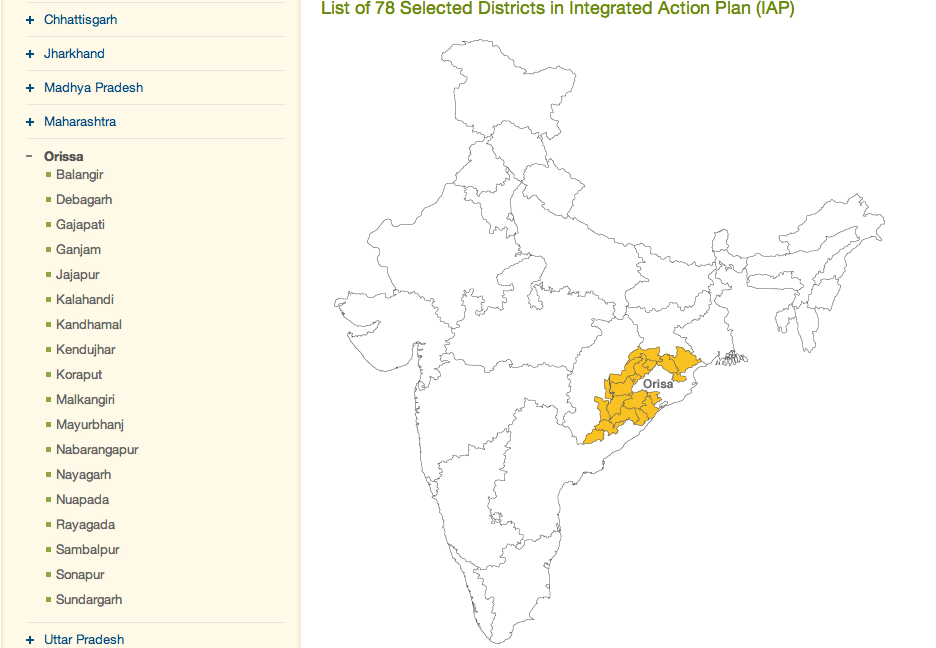
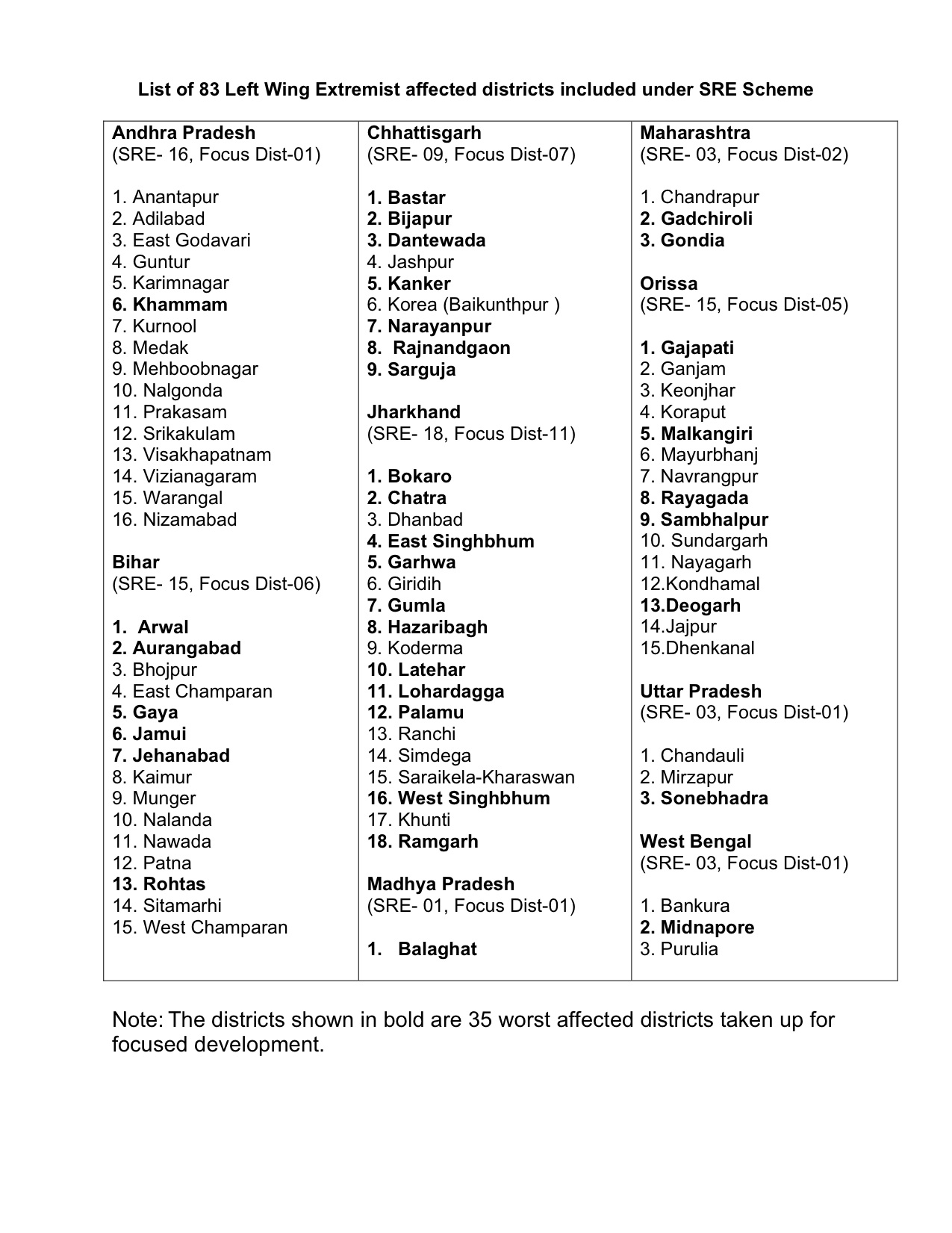 In the 83 SRE districts all the expenses incurred on security in these districts are reimbursed by the MHA. These districts were identified
In the 83 SRE districts all the expenses incurred on security in these districts are reimbursed by the MHA. These districts were identified 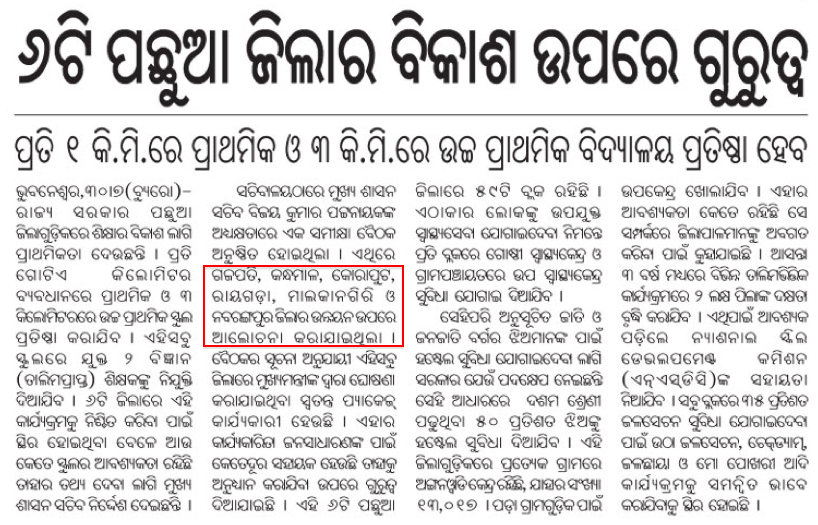
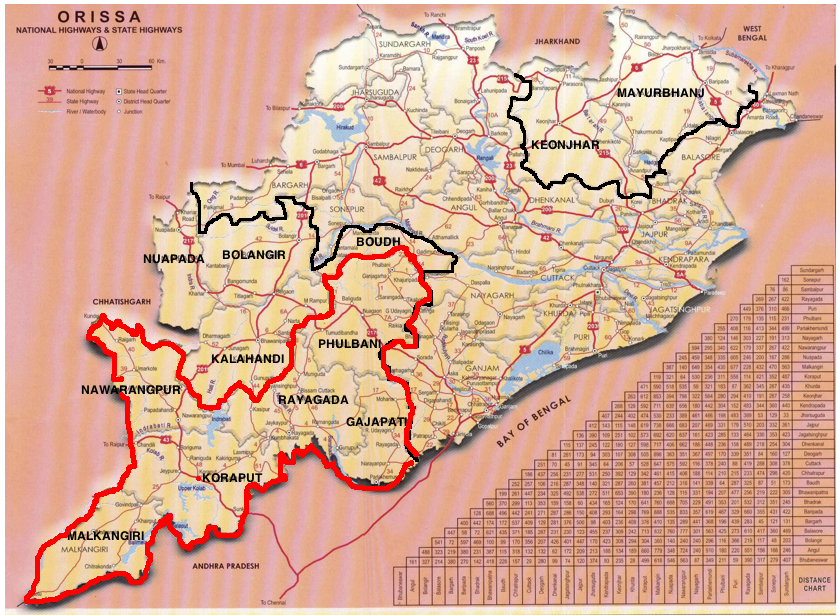
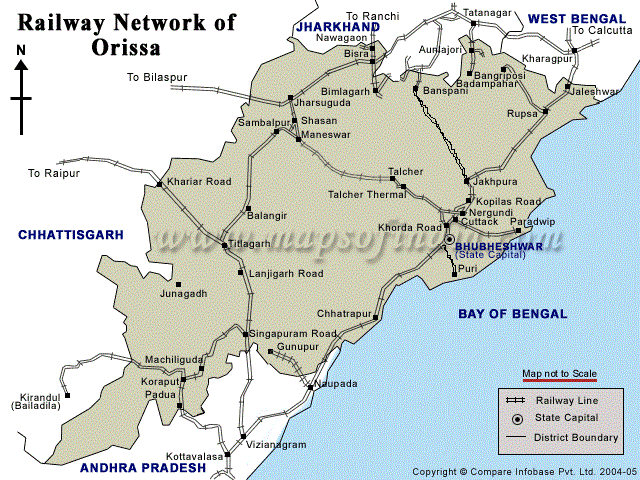
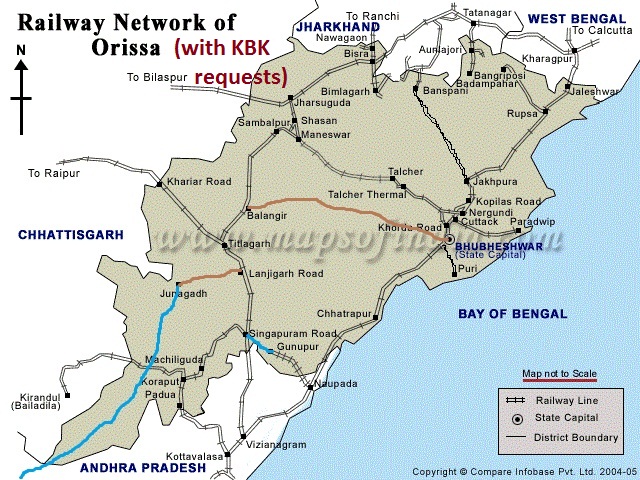
.jpg)
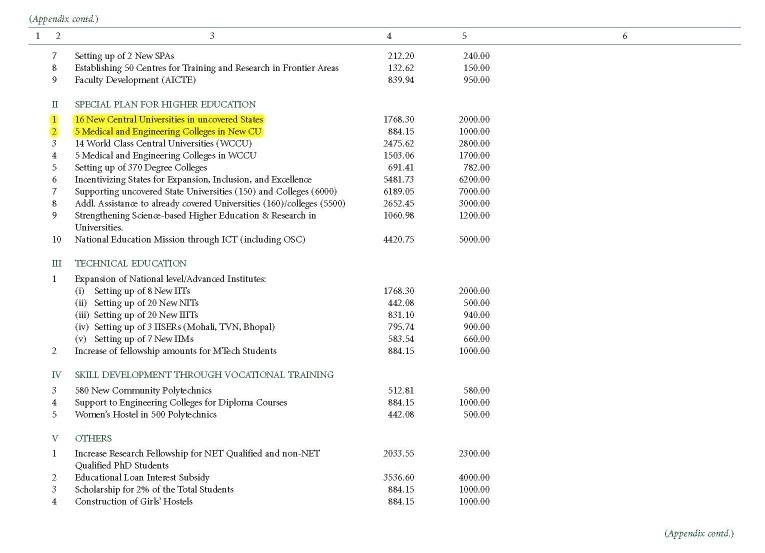
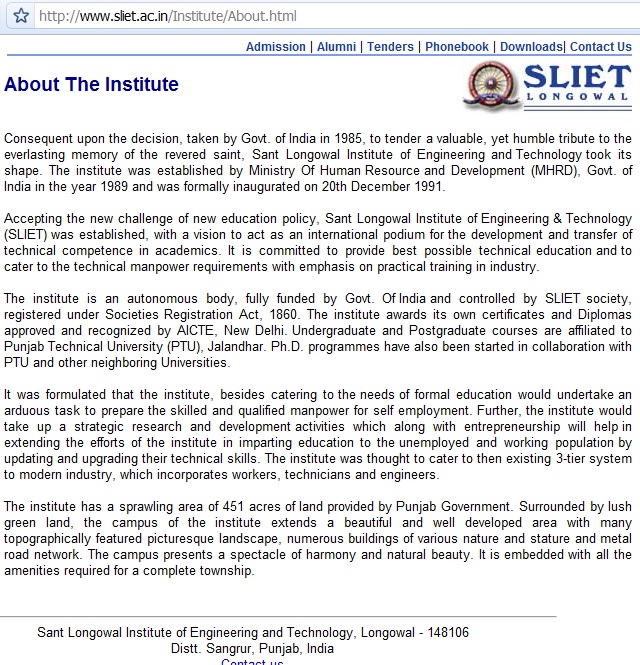
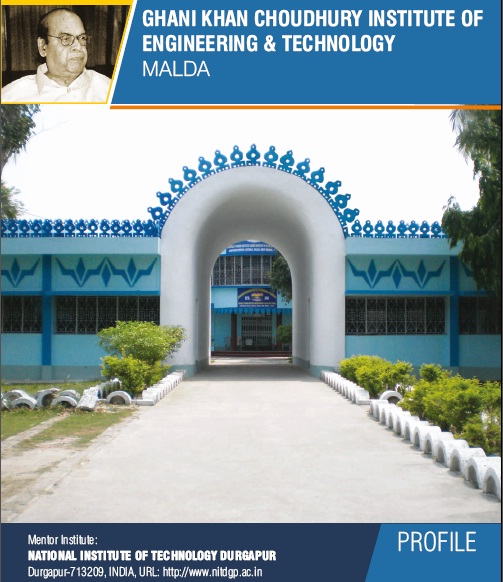
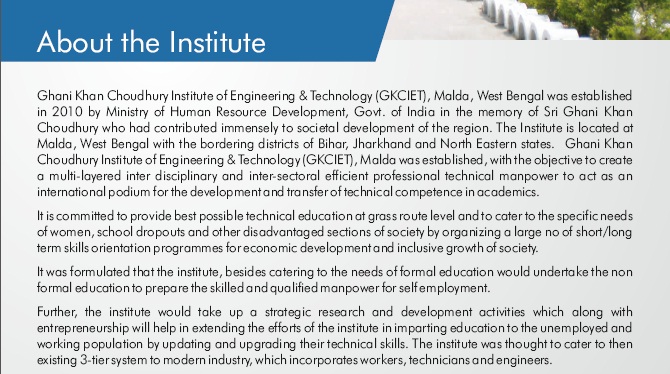
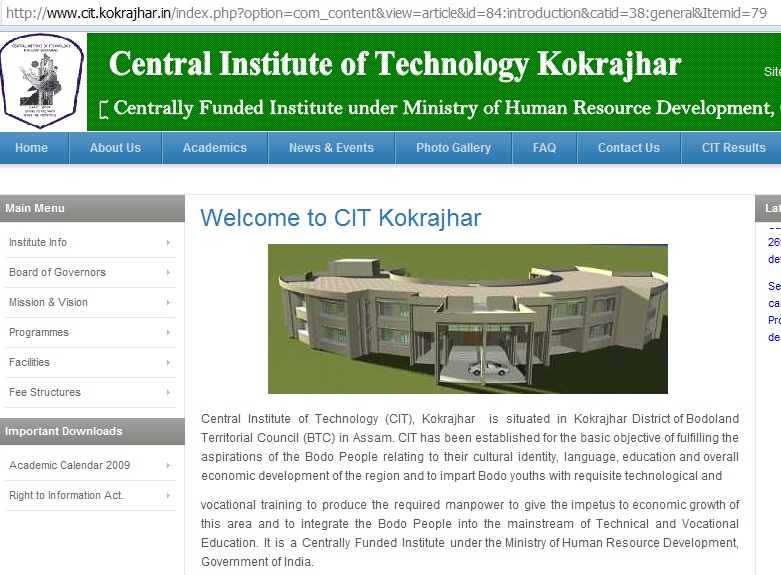
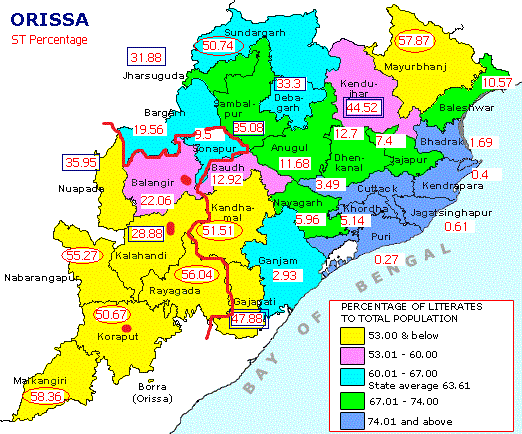

.jpg)
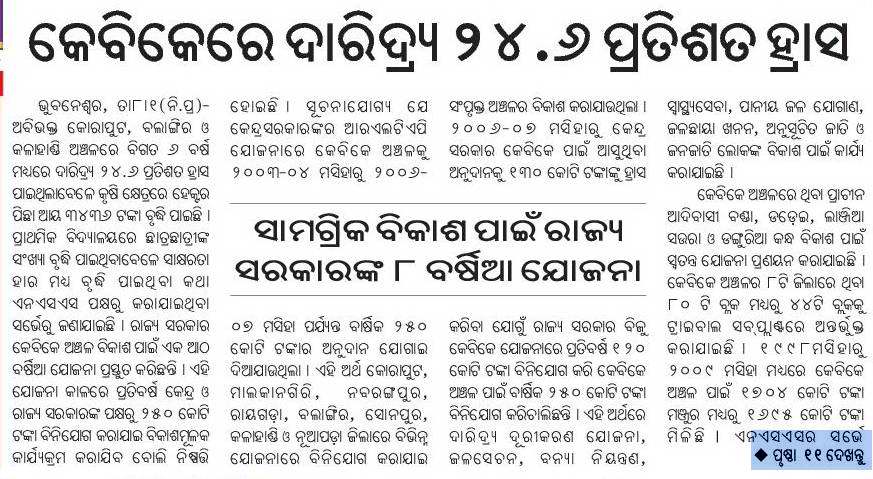
.jpg)
